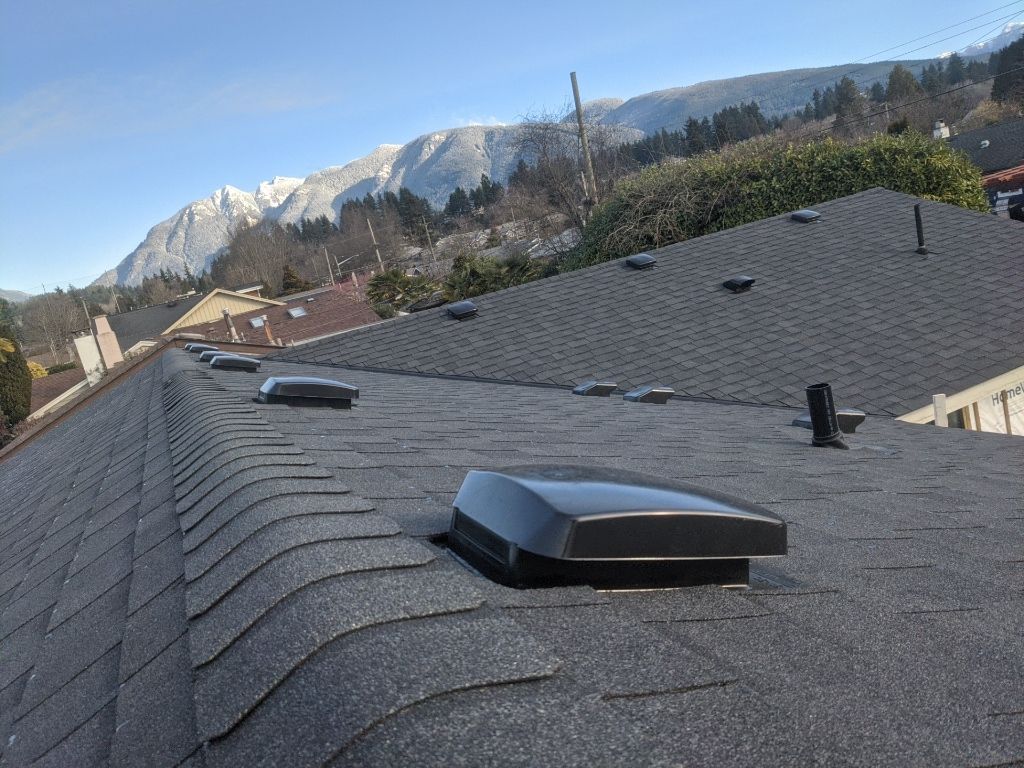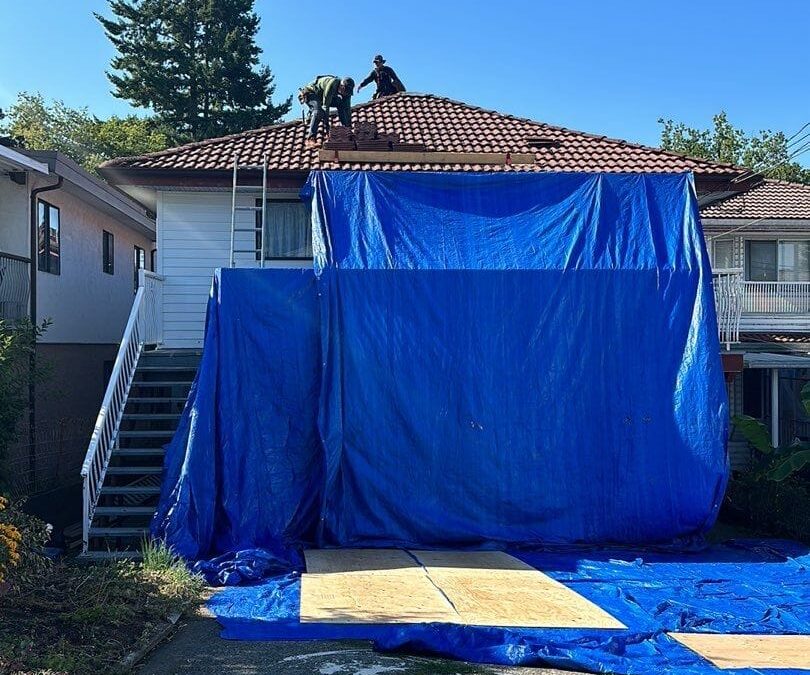Replacing roof materials is a big investment—and it’s about more than just shingles or looks. One key part of any roof replacement that often gets overlooked is attic ventilation.
If your current roof installation is over 20 years old, you might wonder if it’s okay to reuse the same system when replacing roof. While that might seem easier, building codes, roofing materials, and energy standards have changed a lot since then.
This guide will help you decide whether to stick with your old setup or upgrade—especially for sloped roofs—so you can get the most out of your roof replacement.
Why Ventilation Matters When Replacing Roof
When it comes to replacing roof, there’s more to think about than just shingles and materials. One of the most important—but often overlooked—parts of a healthy roofing system is proper ventilation. It plays a big role in keeping your roof in good shape, your energy bills down, and the air in your home fresh.
If you’re planning a roof replacement, especially on a sloped roof, it’s the perfect time to check how well air moves through your attic or roof space—and make improvements if needed.
How Ventilation Helps Your Roof
Good airflow in your roof space can:
- Stop moisture from building up, which helps prevent mold and wood rot.
- Keep attic temperatures balanced, so your home stays cooler in summer and your AC doesn’t have to work as hard.
- Help your roof last longer by reducing stress caused by heat and trapped moisture.
- Protect your insulation, which means your home stays more comfortable year-round.
In places like Victoria, where it rains often and the air can get humid, proper ventilation becomes even more important. Roofs in this kind of weather need to breathe to stay dry and last longer.
Whether you’re scheduling a full roof replacement, a new roof installation, or simply exploring roofing services, don’t skip the ventilation check. A trusted company offering roofing in Victoria can make sure your new roof is built to last—inside and out.
What the BC Building Code Says About Ventilation
If you’re thinking about replacing roof structures and wondering whether you can just reuse your current vent system, start by checking local building codes.
According to the British Columbia Building Code, sloped roofs must have ventilation openings that are not less than 1/300 of the insulated ceiling area. For lower-slope roofs, the minimum area increases to 1/150. These vents must be evenly distributed between the eaves and ridge to allow air to circulate efficiently.
This means that a 20-year-old vent system, even if it seems functional, may no longer comply with current standards. It could lead to failed inspections—or worse, reduced performance of your brand-new roof.
Why Reusing a 20-Year-Old Ventilation System Can Backfire
When planning a roof replacement, it might seem easier to stick with your old ventilation setup—but that could lead to trouble.
- Outdated Systems May Not Meet Current Standards
Ventilation from 20 years ago often falls short of today’s building codes. Poor airflow can cause heat buildup, condensation, or ice dams. If you’re replacing roof materials, it’s the perfect time to upgrade and avoid these issues. - New Materials Need Better Ventilation
Modern shingles and added insulation trap more heat. If airflow isn’t adjusted during roof installation, your home could end up too hot or damp. That’s why proper ventilation should always be part of the plan when replacing roof systems. - Moisture Problems Often Go Unnoticed
Many homeowners discover hidden moisture only after removing the old roof. Trapped moisture can lead to mold and damage. Updating ventilation when replacing roof materials helps prevent this.
To get the most out of your roof replacement, work with pros who offer expert roofing services and know the standards for roofing in Victoria. A small upgrade now can prevent major repairs later.
Modern Ventilation Options for Roof Replacement Projects
So, what are your options when it comes to upgrading ventilation during a roof replacement? The good news is that today’s systems are more efficient, easier to maintain, and often more discreet.
Here are a few ventilation types to consider during roof installation:
- Ridge Vents – These run along the roof’s peak and let hot air escape naturally. They’re one of the most effective passive systems.
- Soffit Vents – Installed under the eaves to bring fresh air into the attic and promote continuous airflow.
- Gable Vents – Placed on the attic walls for cross-ventilation.
- Powered Attic Fans – Ideal when passive airflow isn’t enough, especially in homes with complex roof structures.
When replacing roof systems, combining ridge and soffit vents often gives you the best performance. It creates a balanced airflow that cools and dries the attic space effectively.
To explore each type in more detail and understand which one might suit your home best, check out this guide on the 7 Types of Roof Vents You Should Know About.
This additional insight can help you and your roofing contractor make informed decisions about which system to install during your roof replacement project.
Why You Should Hire Expert Roofing Services in Victoria
If you’re thinking about replacing roof, especially on an older home or one with a sloped design, it’s a smart move to work with local pros. A trusted contractor offering roofing services in Victoria knows the local weather and building codes inside and out—so you’ll get the right solution for your home.
Here’s what you can expect from professional roofing help:
- A full inspection of your attic and any existing vents
- Advice that fits your home’s size and roof type
- Proper vent installation that meets (or even beats) code requirements
- Help preventing future problems caused by trapped moisture or heat
Whether you’re planning a full roof replacement or just need to update a few areas, choosing the right contractor can make all the difference. It helps protect your investment and ensures your roof installation will stand the test of time.
Questions to Ask Your Roofing Contractor Before Replacing Roof
When speaking with a roofing company, bring these important questions to the table:
- Is my current ventilation system up to code?
- Will my new shingles or insulation affect airflow?
- Are there signs of trapped moisture or mold in my attic?
- What ventilation upgrades do you recommend for this type of roof installation?
- How does ventilation affect energy bills in homes across Victoria?
These questions will help you make an informed decision and get the best outcome from your roof replacement project.

Final Thoughts: Replacing Roof Is More Than Just a Surface Fix
When it comes to replacing roof, it might seem easier to just copy what’s already there. But sticking with the same setup—especially if it’s 20 years old—could mean missing out on better energy efficiency and safety.
Now’s a great time to rethink things like attic ventilation. Upgrading this part of your roof system can help lower your energy bills, protect your home from moisture issues, and improve indoor air quality.
Whether you’re replacing roof materials due to age, damage, or just looking for an upgrade, it’s worth thinking about what’s underneath too—not just what’s visible.
By teaming up with pros who specialize in roofing in Victoria, you’ll get advice that fits your home’s unique design and the local climate. So don’t just focus on what you see on top. With any roof replacement, what’s underneath matters too—and making smart upgrades now can save you from bigger problems down the road.
Whether it’s a full roof installation or simply updating what you’ve got, trusted roofing services can make all the difference.

